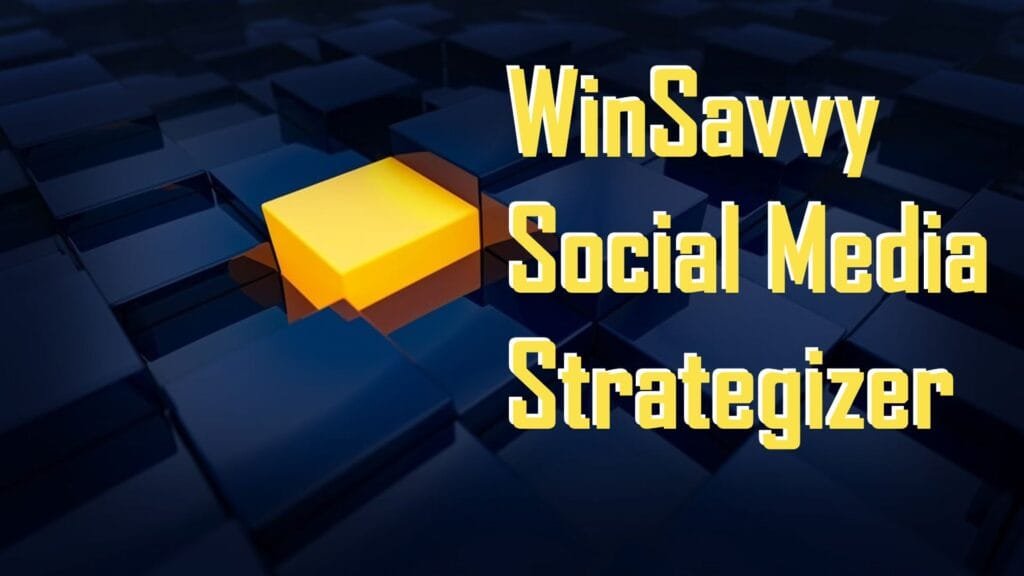In the ever-evolving digital world, where social media’s pulse beats louder each day, picking the right tool to manage your online presence can feel like searching for a needle in a haystack. Enter ContentCal and Crowdfire, two giants in the realm of social media management, each promising to streamline your digital routine with their unique features. But which one will truly elevate your social media game? Whether you’re a small business owner, a bustling agency, or a solo entrepreneur, the quest for the perfect social media companion ends here. Let’s unravel the mystery together, starting with one of the most critical aspects: User Interface and Experience.
| ContentCal | Crowdfire |
|---|---|
 | |
| G2 Score – 4.2 out of 5 stars | G2 Score – 4.0 out of 5 stars |
| TrustRadius Score – 8.6 out of 10 | TrustRadius Score – Nil |
User Interface and Experience: The Gateway to Efficiency
ContentCal: Simplicity Meets Elegance
Imagine walking into a room where everything is in its right place, inviting and straightforward. That’s the vibe ContentCal’s interface brings to the table. Designed with clarity and ease of use in mind, it welcomes users with an intuitive dashboard that simplifies the complexities of social media management. ContentCal shines in its visual content calendar, offering a bird’s-eye view of your planned content across platforms, making scheduling and rescheduling a breeze. It’s the digital equivalent of a well-organized desk, where everything you need is within arm’s reach, streamlined for efficiency and collaboration.
Crowdfire: Power in Your Hands
Now, picture a toolbox, each tool crafted to fit your grip perfectly, ready to tackle a multitude of tasks. Crowdfire presents itself as this versatile toolbox, with an interface that prioritizes functionality and adaptability. It might not have the immediate visual appeal of ContentCal, but what it lacks in aesthetics, it compensates with in-depth features that cater to a wide range of social media tasks. From content discovery to performance analytics, Crowdfire’s dashboard is a command center, empowering users to manage their social media landscape with precision and insight.
The Verdict: A Matter of Preference
Choosing between ContentCal and Crowdfire, based on their user interface and experience, boils down to what you value more: the elegance and simplicity of ContentCal’s visually appealing dashboard or the robust, feature-rich environment of Crowdfire. ContentCal is ideal for those who prefer a clean, straightforward approach to planning and collaboration, while Crowdfire suits users looking for a comprehensive toolkit to dive deep into their social media strategy.
Both platforms offer a gateway to social media efficiency, but the best fit for you will depend on your personal style, the complexity of your social media needs, and how you interact with digital tools.
Content Discovery and Curation: Nurturing Engagement and Relevance
ContentCal: A Collaborative Approach to Content
ContentCal stands out for its emphasis on collaboration and organization in content curation. It doesn’t just offer tools for scheduling; it’s built to facilitate the brainstorming, planning, and execution stages of content creation. The platform’s ‘Content Hub’ feature is a testament to this, acting as a central repository where teams can store ideas, drafts, and final posts. This approach encourages a more organized and cohesive content strategy, ensuring that every piece of content is aligned with your brand’s voice and objectives.
Moreover, ContentCal’s integrations with various content sources and RSS feeds enable users to easily pull in external content for inspiration or resharing. This blend of internal collaboration and external content discovery makes it a comprehensive tool for those looking to keep their feeds fresh and engaging without constantly scouring the internet for ideas.
Crowdfire: Mastering the Art of Content Discovery
Crowdfire, on the other hand, excels in the art of content discovery. It offers a robust set of features designed to help users find, curate, and share content that resonates with their audience. With its smart recommendation engine, Crowdfire takes the guesswork out of content curation by suggesting articles, images, and posts based on your selected topics of interest or past performance metrics.
This focus on automated discovery is complemented by tools that allow for easy customization and sharing of curated content. Whether you’re looking to share a trending article, a viral video, or a relevant tweet, Crowdfire simplifies the process, making it easy to maintain an active and engaging social media presence. Its ability to identify and recommend high-engagement content tailored to your audience’s preferences sets it apart as a powerful tool for users who want to boost their social media engagement efficiently.
The Verdict: Balancing Creativity and Efficiency
When it comes to content discovery and curation, the choice between ContentCal and Crowdfire hinges on your preferred balance between creativity and efficiency. ContentCal is the go-to for teams that value a collaborative, organized approach to content creation, offering tools that support the entire content lifecycle from ideation to publication. It’s ideal for users who enjoy crafting a cohesive content strategy with a mix of original and curated content.
Conversely, Crowdfire is a powerhouse for users who prioritize content discovery and want to leverage automation to find and share content that engages their audience. Its recommendation engine and easy sharing options make it perfect for those looking to keep their feeds lively with minimal effort.
Both platforms offer unique advantages in content discovery and curation, but the best fit for you will depend on how you approach content creation and what type of support you need to execute your social media strategy effectively.
Analytics and Reporting: Measuring Success and Informing Strategy
In the dynamic world of social media, the ability to measure success and glean actionable insights from your activities is invaluable. Let’s compare how ContentCal and Crowdfire equip you with the analytics and reporting tools necessary to refine and enhance your social media strategy.
ContentCal: Comprehensive Insights for Strategic Decisions
ContentCal approaches analytics with a focus on comprehensiveness and clarity. It provides users with a detailed overview of their social media performance across all connected platforms. From engagement metrics like likes, shares, and comments to more granular data such as best posting times and audience demographics, ContentCal’s analytics dashboard offers a holistic view of your social media efforts.
What sets ContentCal apart is its ability to translate complex data into actionable insights. The platform offers customizable reporting features, enabling users to generate reports tailored to their specific needs. Whether it’s showcasing campaign results to stakeholders or analyzing content performance to inform future strategies, ContentCal’s reporting tools are designed to support informed decision-making. This focus on actionable analytics makes it a strong contender for businesses and agencies looking to drive strategic growth through social media.
Crowdfire: Targeted Analytics for Growth and Engagement
Crowdfire takes a slightly different approach to analytics, with a focus on growth and engagement. The platform provides a suite of analytics tools that help users understand how their content is performing in terms of reaching new audiences and engaging existing followers. Crowdfire’s strength lies in its targeted insights, such as identifying which content types are most effective and when your audience is most active.
Additionally, Crowdfire offers features that track follower growth and engagement trends over time, giving users a clear picture of their social media trajectory. This focus on growth-oriented metrics makes Crowdfire an excellent tool for businesses and individuals looking to expand their reach and build a more engaged online community.
The Verdict: Aligning Analytics with Your Goals
Choosing between ContentCal and Crowdfire for analytics and reporting ultimately depends on your specific goals and how you prefer to use data to inform your social media strategy. If you value a comprehensive overview of your social media performance with the ability to drill down into detailed insights, ContentCal’s robust analytics and customizable reporting features will serve you well. It’s particularly suited to those who need to present data to stakeholders or who enjoy deep-diving into metrics to refine their content strategy.
On the other hand, if your primary focus is on growth and engagement, and you appreciate targeted insights that directly inform content and posting strategies, Crowdfire’s analytics tools are likely to align more closely with your needs. Its ability to highlight what’s working and identify opportunities for increased engagement can be especially beneficial for rapidly growing brands or influencers.
Both ContentCal and Crowdfire offer powerful analytics capabilities, but the right choice for you will depend on the type of insights you value most and how you plan to act on the data you gather.

Related: Check out our free SEO suite

Pricing Structures and Value: Balancing Cost with Benefits
The cost of a social media management tool is a significant factor in the decision-making process, especially when balancing budget constraints with the need for comprehensive features. Let’s compare ContentCal and Crowdfire in terms of their pricing structures and the value they provide to users.
| ContentCal | Pro Plan: Starting at $17 per month per user (billed annually), offering 4 social profiles, unlimited posts, and content planning features.Company Plan: Custom pricing for teams and businesses that need more social profiles, additional users, and advanced features like analytics and priority support. |
| Crowdfire | Free Plan: Crowdfire offers a free version that includes 1 linked account per social network and up to 10 scheduled posts per account.Plus Plan: Starting at $7.48 per month (billed annually), this plan allows for 2 accounts per social network and 100 scheduled posts per account.Premium Plan: At $37.48 per month (billed annually), offering 5 accounts per social network and 800 scheduled posts per account, plus additional features like competitor analysis.VIP Plan: Starting at $74.98 per month (billed annually), with 25 accounts per social network and 800 scheduled posts per account, designed for larger teams and agencies. |
ContentCal: Flexible Pricing for Diverse Needs
ContentCal offers a range of pricing tiers designed to cater to various users, from freelancers and small businesses to large agencies and enterprises. The platform typically starts with a free version or trial period, allowing users to explore its features before committing financially. As you move up the tiers, ContentCal unlocks more advanced features such as additional social profiles, team collaboration tools, and in-depth analytics.
One of ContentCal’s strengths is its emphasis on collaboration and planning, making it a valuable tool for teams that require a shared space for content strategy development. Even at its entry-level paid plans, ContentCal provides a solid foundation for social media management, with the option to scale as your needs grow. For larger organizations, ContentCal offers custom plans with features tailored to complex requirements, ensuring that businesses of all sizes can find a suitable option.
Crowdfire: Cost-Effective Solutions for Growth
Crowdfire presents its pricing with a focus on providing cost-effective solutions for individuals and businesses aiming to grow their social media presence. It offers a free plan with basic features, making it accessible for users just starting out or with limited needs. The paid plans increase in price based on the number of social profiles and the advanced features included, such as competitor analysis and more detailed reporting.
Crowdfire’s value proposition lies in its content discovery and automation capabilities, which are designed to save time while enhancing social media engagement. For users primarily interested in these aspects, Crowdfire’s pricing can be highly attractive, offering essential tools for content scheduling and analysis without a significant financial commitment. The platform is particularly appealing to solo entrepreneurs, small businesses, and content creators who need an affordable yet powerful tool to manage their online presence.
The Verdict: Choosing Based on Value for Money
When it comes to selecting between ContentCal and Crowdfire based on their pricing and value, the decision hinges on your specific social media management needs and budget. ContentCal is well-suited for teams and businesses seeking a collaborative platform with comprehensive planning and analytics features. Its pricing structure reflects the breadth of functionality it offers, making it a solid investment for those who prioritize organization and strategy in their social media efforts.
On the other hand, Crowdfire offers a cost-effective solution for users focused on content discovery, automation, and growth. Its pricing is tailored to accommodate users who require a straightforward, efficient tool to enhance their social media engagement and reach without overspending.
Ultimately, both ContentCal and Crowdfire provide valuable services at different price points, but the right choice for you will depend on the features you value most and how much you’re willing to invest in your social media management tool.
Integration Capabilities: Extending Functionality and Efficiency
ContentCal: A Hub of Connectivity
ContentCal positions itself as more than just a social media scheduling tool; it acts as a central hub for your content marketing efforts. It offers integrations with a wide array of platforms and services that extend its functionality beyond social media management. This includes connections to major social media networks, of course, but also integrations with tools like Zapier, which opens the door to thousands of app connections, allowing for automation of tasks across your entire marketing stack.
Moreover, ContentCal’s ability to integrate with content creation tools, Google Analytics for web traffic analysis, and various CRM systems ensures that it fits seamlessly into the broader digital marketing workflow. These integrations are designed to streamline processes, reduce the need for manual data transfer, and provide a more holistic view of marketing efforts.
Crowdfire: Focused on Social Media Excellence
Crowdfire, while offering a somewhat narrower scope of integrations, focuses intensely on maximizing the efficiency and effectiveness of social media management. Its integrations are carefully selected to enhance the core functionalities of content discovery, scheduling, and analytics. This includes direct integration with major social networks, ensuring a smooth workflow for publishing and analyzing content.
Crowdfire also offers integration with tools like Canva, which allows users to create visually appealing content without leaving the platform. While it might not connect with as broad a range of third-party apps directly as ContentCal, its focus ensures that the integrations it does offer are deeply beneficial for social media strategy execution.
The Verdict: Broad Connectivity vs. Deep Social Media Focus
Choosing between ContentCal and Crowdfire based on their integration capabilities comes down to the breadth of your digital marketing needs versus the depth of your social media focus. If you’re looking for a tool that serves as a central node in a wider marketing technology (MarTech) stack, facilitating cross-platform campaigns and data sharing, ContentCal’s extensive integrations make it a compelling choice. Its ability to connect with a variety of tools can significantly enhance workflow efficiency and insight generation across your marketing efforts.
Conversely, if your primary need is a tool that excels specifically in social media management, with integrations that enhance content creation, scheduling, and analytics within the social sphere, Crowdfire’s focused integration strategy offers significant value. Its direct connections with social media platforms and content creation tools ensure a streamlined process for managing your social presence effectively.
Both ContentCal and Crowdfire offer valuable integration capabilities, but the right choice for you will depend on whether you value a tool that integrates widely across your marketing ecosystem or one that focuses on deepening your social media management capabilities.
Customer Support and Community Engagement: Enhancing User Experience
ContentCal: Comprehensive Support and Active Community
ContentCal places a strong emphasis on customer support, offering multiple channels for assistance, including email, live chat, and a knowledge base filled with helpful articles and tutorials. This ensures that users can find answers to their questions and solutions to their problems quickly and efficiently. ContentCal’s commitment to customer service is evident in its responsive support team, which receives high marks from users for their helpfulness and expertise.
Beyond direct support, ContentCal has fostered a vibrant online community. Through its social media channels, webinars, and dedicated user groups, ContentCal encourages users to share experiences, tips, and best practices. This community engagement not only enhances the user experience but also provides a forum for learning and collaboration among marketers, business owners, and content creators.
Crowdfire: Focused Support and Learning Resources
Crowdfire offers a solid customer support framework, with a focus on self-service resources such as a detailed FAQ section and a comprehensive knowledge base. These resources are designed to empower users to troubleshoot issues and learn how to use the platform’s features effectively on their own. For direct support, Crowdfire provides assistance through email and social media channels, ensuring users have access to help when they need it.
While Crowdfire may not have as extensive a community engagement program as ContentCal, it still maintains an active presence on social media, where it shares tips, updates, and engages with its user base. Crowdfire’s blog is another resourceful outlet that offers insights into social media trends, strategies, and best practices, helping users stay informed and improve their social media management efforts.
The Verdict: Balancing Support with Self-Sufficiency
The choice between ContentCal and Crowdfire regarding customer support and community engagement depends largely on your preferences for learning and interacting with the platform. If you value a high level of direct support and enjoy being part of an active community where you can exchange ideas and learn from peers, ContentCal’s approach will likely resonate with you. Its comprehensive support system and efforts to foster a sense of community among its users make it an attractive option for those who appreciate a collaborative learning environment.
Conversely, if you prefer a platform that offers strong self-service resources, allowing you to independently troubleshoot and learn at your own pace, Crowdfire’s focus on knowledge base articles, FAQs, and informative blog posts might be more appealing. While it offers direct support channels, its emphasis on self-sufficiency can be particularly suited for users who like to explore and solve problems on their own.
Both ContentCal and Crowdfire provide robust support in different ways, but the right choice for you will hinge on the level and type of support you expect from a social media management tool and how you prefer to engage with the platform and its community.
Conclusion
Choosing between ContentCal and Crowdfire for your social media management boils down to aligning the tool’s features with your specific needs, workflow, and preferences. ContentCal shines with its user-friendly interface, collaborative features, and strong customer support, making it ideal for teams seeking a comprehensive tool to streamline their social media strategy. Its active community and extensive integrations further enhance its appeal, providing a collaborative environment for users. On the flip side, Crowdfire stands out for its content discovery and recommendation engine, focused support resources, and efficiency in managing multiple social media platforms, catering especially to individuals or businesses aiming to grow their online presence effectively and affordably.
Both platforms offer unique strengths—ContentCal with its emphasis on collaboration and planning, and Crowdfire with its powerful automation and content curation capabilities. The decision ultimately hinges on what aspects of social media management are most critical to you: whether it’s the depth of collaborative features and community support with ContentCal or the streamlined, growth-focused tools provided by Crowdfire.
Read Next





















